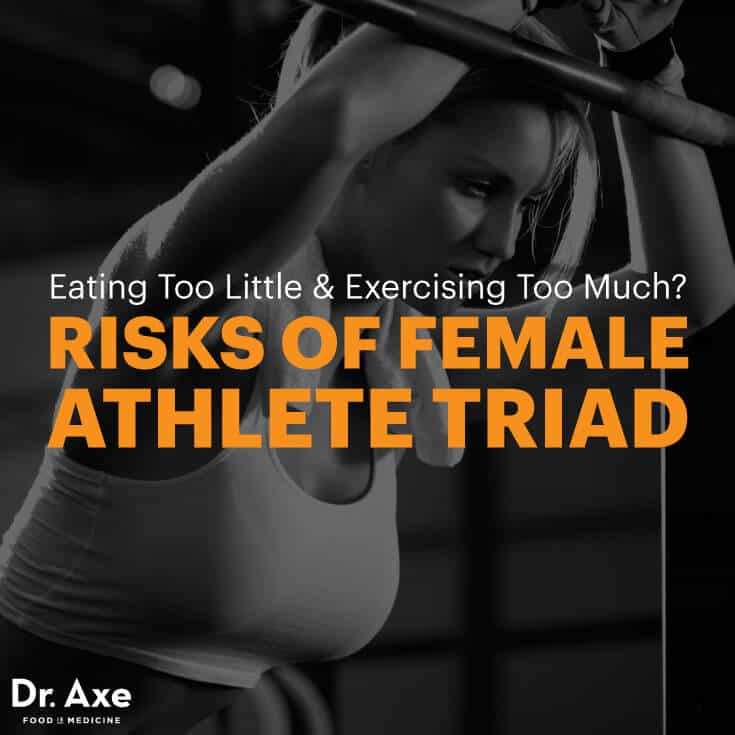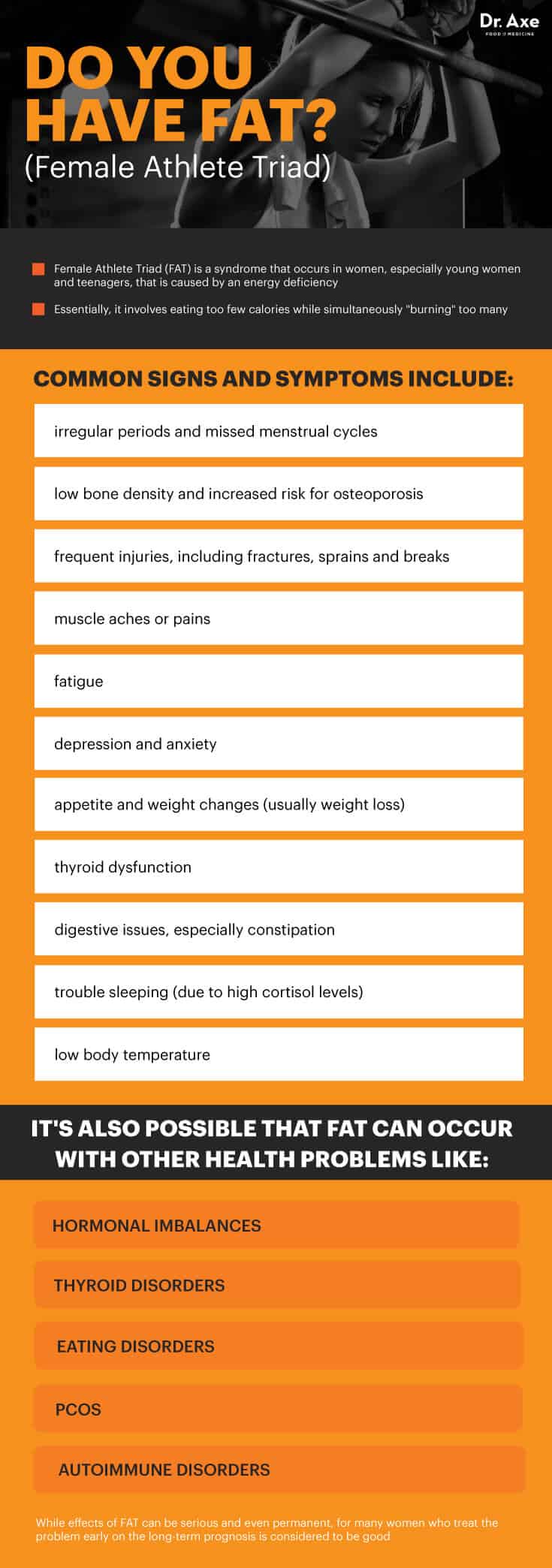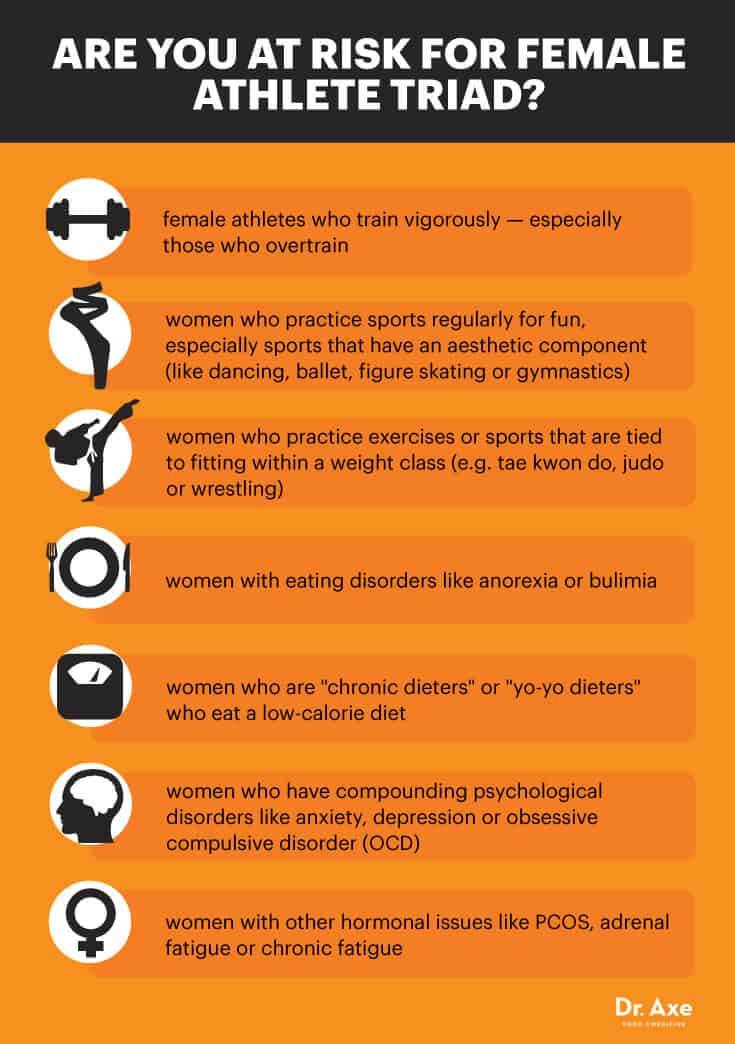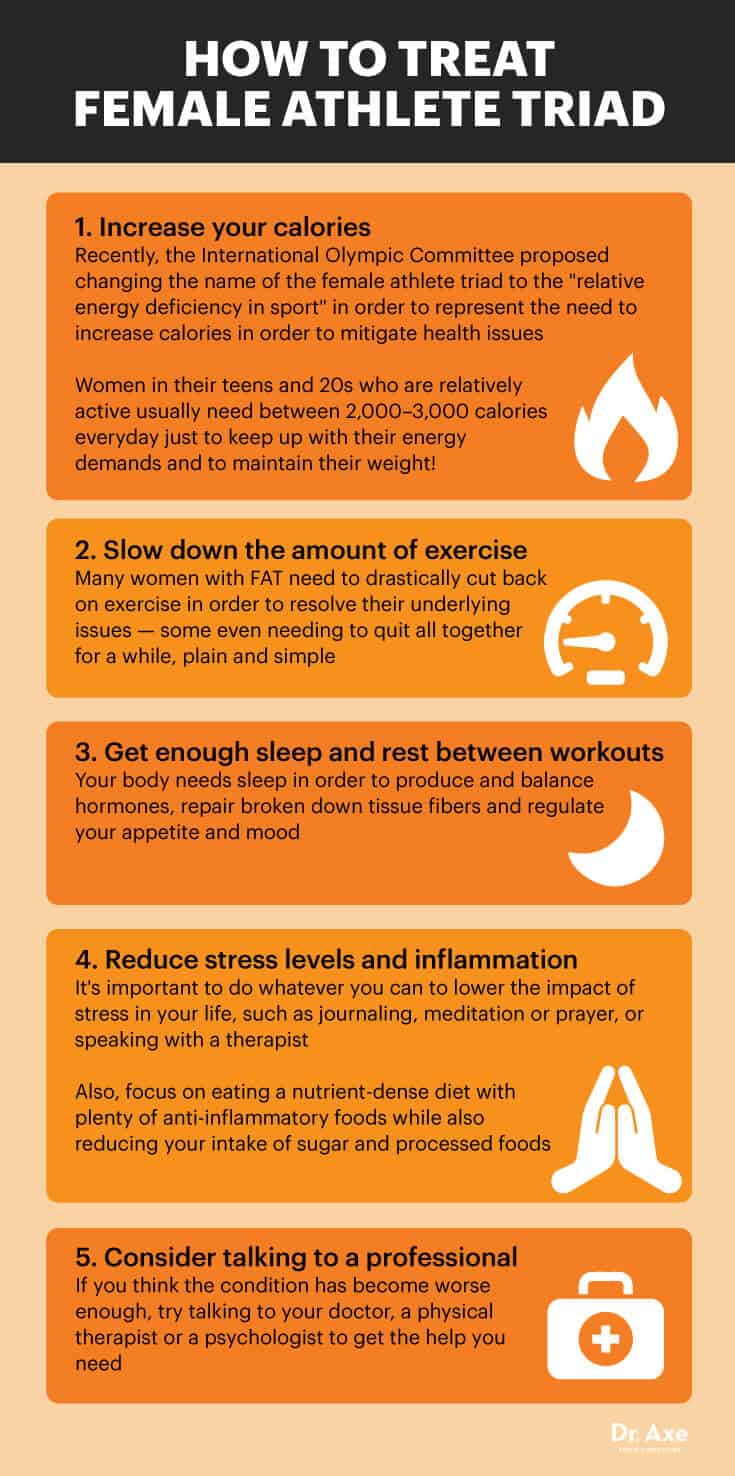This Dr. Axe content is medically reviewed or fact checked to ensure factually accurate information.
With strict editorial sourcing guidelines, we only link to academic research institutions, reputable media sites and, when research is available, medically peer-reviewed studies. Note that the numbers in parentheses (1, 2, etc.) are clickable links to these studies.
The information in our articles is NOT intended to replace a one-on-one relationship with a qualified health care professional and is not intended as medical advice.
This article is based on scientific evidence, written by experts and fact checked by our trained editorial staff. Note that the numbers in parentheses (1, 2, etc.) are clickable links to medically peer-reviewed studies.
Our team includes licensed nutritionists and dietitians, certified health education specialists, as well as certified strength and conditioning specialists, personal trainers and corrective exercise specialists. Our team aims to be not only thorough with its research, but also objective and unbiased.
The information in our articles is NOT intended to replace a one-on-one relationship with a qualified health care professional and is not intended as medical advice.
Eating Too Little & Exercising Too Much? Risks of Female Athlete Triad
November 18, 2015

Does this situation sound familiar to you?
A young woman loves to work out, practice a competitive sport and takes pride in taking care of her body. In order to maintain her lean body, she eats only enough calories to feel relatively full. As she feels herself getting even fitter, she keeps increasing her training time and exercise intensity, all while reducing the amount of rest days she takes.
While she knows her energy needs are going up, she’s not willing to eat more calories, rest more or slow down. Soon she notices irregular periods, experiences more aches and pains, and can’t sleep. She ends up feeling chronic pains in her foot but keeps working out anyway, until one day she suffers an injury and winds up in the ER.
The female athlete triad (FAT) is a syndrome that occurs in women, especially young women and teenagers, that is caused by an energy deficiency — essentially, it involves eating too few calories while simultaneously “burning” too many, often caused by overtraining. Symptoms of FAT occur on a “continuum of severity,” meaning some women will experience more drastic repercussions than others depending on genetic factors, hormone levels, stress loads and energy needs.
Young women are especially at a high risk for experiencing an energy deficiency for several reasons, including: society’s pressure to stay thin, the rise in popularity of female sports, the growing diet industry over the past several decades, and the pressure to exercise (sometimes excessively).
When these factors all come together and combine with chronic stress — caused by a combination of things like academic pressure, social comparison, competitiveness, etc. — we find that a growing percentage of women are dealing with serious emotional and physical consequences.
Studies have found that among college female athletes, up to 27 percent might fit the criteria for being diagnosed with female athletic triad syndrome! (1)
Symptoms of Female Athlete Triad
The three most prominent interrelated symptoms caused by FAT are: experiencing an energy deficiency of calories (which can be caused by an eating disorder in some cases but not always), having menstrual abnormalities including missed periods, and experiencing bone loss/osteoporosis. (2)
All three symptoms don’t need to be present for a doctor to diagnose FAT; sometimes 1–2 of the symptoms can be experienced but the female’s history of eating and exercising can be enough to convince the doctor. (3) It’s also possible that FAT can occur alongside other health problems like hormonal imbalances, thyroid disorders, eating disorders, PCOS and autoimmune disorders.
Common signs and symptoms of female athletic triad include:
- irregular periods and missed menstrual cycles
- low bone density and increased risk for osteoporosis
- frequent injuries, including fractures, sprains and breaks
- muscle aches or pains
- fatigue
- depression and anxiety
- appetite and weight changes (usually weight loss)
- thyroid dysfunction
- digestive issues, especially constipation
- trouble sleeping (due to high cortisol levels)
- low body temperature
While effects of FAT can be serious and even permanent, for many women who treat the problem early on the long-term prognosis is considered to be good. Suffering permanent infertility, bone loss, or needing hospital visits and surgeries to correct injuries isn’t common when women work to correct the underlying issues — like their diet and energy needs.

Who’s Affected by Female Athlete Triad?
As the name implies, female athletes are most as risk for female athletic triad. But this doesn’t mean you need to be an college athlete, competitor or professional — every young girl or woman is capable of dealing with FAT if they expend more energy than they take in!
The groups of women that are at the highest risk for developing female athletic triad include: (4)
- female athletes who train vigorously (such as high school, college or professional athletes), especially if they’re under a lot of pressure from teammates, coaches or parents that can increase the likelihood for overtraining
- women who practice sports regularly for fun, especially sports that have an aesthetic component (like dancing, ballet, figure skating or gymnastics)
- women who practice exercises or sports that are tied to fitting within a weight class (tae kwon do, judo or wrestling, for example)
- women with eating disorders like anorexia or bulimia (and don’t practice intuitive eating)
- women who are “chronic dieters” or “yo-yo dieters” who eat a low-calorie diet and can approach starvation mode
- women who have compounding psychological disorders like anxiety, depression or obsessive compulsive disorder (OCD)
- women with other hormonal issues like PCOS, adrenal fatigue or chronic fatigue
The American Academy of Orthopedic Surgeons recommends you ask yourself these questions to see if you (or a daughter, friend, sister, etc.) might be at risk (5):
- do you regularly play sports, especially sports that reward being thin for appearance (such as figure skating or gymnastics)?
- are you currently focused on increasing your training in order to improve your athletic performance (such as distance running or rowing)?
- do you follow trends and advertising that might encourage you to try to reach an unhealthy weight level?
- do you suffer from low self-esteem or depression and focus on weight loss often? Are you dissatisfied with your body or striving to be thin?
- do you feel pressure to lose weight from athletic coaches or parents?

What Causes Female Athlete Triad
In simplest form, FAT is caused by not supplying a female’s body with enough “fuel” to keep them going. In many ways, the delicate balance of hormones within the female body all boils down to having enough positive “energy.”
An energy deficiency is an imbalance between the amount of energy consumed and the amount of energy expended. Low-calorie diets, overtraining and stress all zap energy, while getting enough rest and eating enough calories increases energy. We lose energy from exercise, experiencing trauma or low-grad chronic stress, skipping sleep, and eating a poor diet that taxes the body.
For some women, female athlete triad is caused by a conscious restriction of food intake or an eating disorder. Keep in mind that not every women who’s dealing with “disordered eating” is going to be diagnosed with anorexia or bulimia — there is a big gray area that includes millions of women who essentially are “chronic dieters” who struggle to lose weight. This is usually sparked by problems with body image and a “high drive for thinness” due to societal pressure. Attempting to lose weight over and over again, or to maintain an unrealistically low weight, can cause some women to eat less than their body requires for months or years at a time.
Ar the same time, more and more women are taking up competitive sports and intense exercise programs, both of which require a lot of energy. There are tons of proven benefits of exercise, but in some cases too much exercise can cause just as many problems as too little. When women exercise vigorously — for example, by training or practicing a sport for many hours a week, such as during college — their energy needs rise significantly.
But when a woman isn’t willing to eat more calories in order to prevent an energy deficiency, a hormonal imbalance can wind up developing. When female sex hormone levels drop as a result of the body being overly stressed and fatigued, several dangerous symptoms develop in the following ways:
Symptom 1: Irregular Periods/Amenorrhea
Many experts consider hormonal issues, menstrual disturbances and amenorrhea (missed periods) to be the most serious risk associated with the triad. Too much exercise coupled with not eating enough calories decreases hormones like estrogen, estradiol and progesterone that are responsible for regulating a woman’s menstrual cycle.
Amenorrhea is defined as having no menstrual period for three months or more, although many female athletes can still have fairly regular periods, or irregular periods that are on and off (known as “functional hypothalamic amenorrhea”), but still be suffering from serious hormonal problems in other ways. (6) Reports show that women with FAT also often experience “oligomenorrhea,” which is defined as greater than 35 days between cycles.
Why does an energy deficit cause periods to change or stop coming? The female body is very sensitive to perceived states of “famine” or starvation. This is a built-in survival mechanism that has evolved over many thousands of years, helping to prevent a pregnancy from happening when a woman’s body can’t keep up with that high of an energy demand.
Many women with FAT will stop having their periods all together, notice they become less frequent/irregular, and suffer from problems with fertility. Young girls/teenagers who play sports intensely and under-eat might never get their period to begin with, with the body requires a high amount of energy to complete the puberty process.
Missing a period can be a result of a number of different hormonal issues besides FAT (such as polycystic ovarian syndrome or even pregnancy) but it’s usually a warning sign that something isn’t right, or at least has changed. And when you’re missing your period, it also means that other parts of the body might be suffering too, such as your mental processes/mood, digestive system and ability to preserve bone health.
Symptom 2: Bone Loss/Osteoporosis
One of the primary ways that hormonal disturbances in females damage their health is by putting them at a higher risk for low bone mass, sometimes leading to weakened bones or osteoporosis. Low female sex hormone levels, including estrogen, weaken bones and can result in a higher likelihood of fractures, injuries, stress fractures and breaks.
Estrogen is usually abnormally low in girls with female athlete triad, which is especially problematic for bones when a woman isn’t eating a nutrient-dense diet. For example, developing a vitamin K, vitamin D or calcium deficiency due to eating a low-calorie, low-nutrient diet — and thus raising the risks for low bone mass. Ironically, having strong bones is essential for being an athlete, and osteoporosis or bone fractures can pave the way for injuries that can ruin a female athlete’s sport career, exercise hobby or passion.
What’s even more unfortunate is that during a female’s teenage years and through her 20s is when she needs to be building strong bones the most. While a woman is still young and growing is the height of her being able to lay down healthy bone mass, so skipping out on eating enough nutrients/calories to help this process can cause permanent damage in the skeletal system that can stay with her for life. (7)
Unfortunately, some women might not even realize they are damaging their bones before it’s too late, when they reach menopause and bone loss is further accelerated.
Symptom 3: Fatigue/Mood Changes
Eating low in calories (often a low-fat or low-carb diet), coupled with hormonal changes and constantly feeling tired or achy, is enough to leave many women feeling more anxious and depressed than usual. Over-exercising and under-eating can both increase cortisol levels, which is the body’s primary stress hormone that makes it difficult to sleep well, have enough lasting energy and keep an optimistic outlook on life.
How to Treat Female Athlete Triad
1. Increase the Amount of Energy (aka Calories!) Going In
According to the American College of Sports Medicine (ACSM), “energy availability is the cornerstone on which the other 2 components of the triad rest. Without correction of this key component, full recovery from the female athlete triad is not possible”. (8, 9) In fact, recently the International Olympic Committee (IOC) even proposed changing the name of the female athlete triad to “relative energy deficiency in sport” in order to represent the need to increase calories and address health issues affected by low energy availability! (10)
Even in women who don’t consider themselves “athletes” or excessive exercisers, changing their eating habits and dieting can cause their periods to change or even stop, energy levels to plummet, moods to change and so on. Chronically running low on calories can also have effects like slowing the metabolic rate, lowering immunity, inhibiting normal protein synthesis, and damaging cardiovascular and psychological health. Following low-calorie diets and bring prone to disordered eating can cause dehydration, muscle fatigue and weakness, an erratic heartbeat, kidney damage, and other serious conditions.
Active teenagers, young girls and women might require more calories than they realize. For example, studies show that calorie needs for physically active women who are of “reproductive age” might be underestimated. (11) Women in their teens and 20s who are relatively active usually need between 2,000–2,400 calories every day just to keep up with their energy demands and maintain their weight! (12) For some female athletes, that calorie demand may go to 3,000 or above.
If you have a inkling that you might be under-eating for your needs, it’s a good idea to figure out about how many calories you really require every day and to make sure you’re eating around that amount. Also pay attention to your body’s “bio-feedback” so you can make adjustments. Are you losing weight easily? Feeling fatigued and not sleeping well? Dealing with bad digestion? If yes, then you might need to increase calories more.
2. Slow Down the Amount of Energy Going Out (aka Too Much Exercise!)
Many women with FAT need to drastically cut back on exercise in order to resolve their underlying issues — some even needing to quit all together for a while, plain and simple. While it might sound scary, unnecessary or too drastic, giving your body enough fuel and rest is key to fixing hormones.
If you’re not sure how much exercise you can tolerate, you might want to consult a physician, personal trainer or physical therapist to take a fitness test, have a bone mineral density test done, and check your heartbeat and other vital signs.
If you recently substantially increased your physical activity, you’ll want to pull back and perhaps try more gentle forms of exercise, like walking, yoga or swimming. It might be tough to put your favorite vigorous sports on hold for a while, but not all exercise programs are suitable for everyone, especially if they’re causing you to become injured, tired and sick.

3. Get Enough Sleep and Rest Between Workouts
Skipping sleep only makes it harder for the body to bounce back and recover after workouts. Your body needs sleep in order to produce and balance hormones, repair broken down tissue fibers and regulate your appetite and mood.
Feel like you’re always tired but you can’t sleep? Ironically, overtraining and being stressed out can increase cortisol, which can make it even harder to sleep well through the night. If you currently feel like you can’t sleep well no matter what you try, focus on reducing stress more, eating more nutrient-dense calories (possibly including a snack before bed) and lowering the intensity of your exercise.
4. Reduce Stress Levels and Inflammation
Chronic stress and inflammation both make just about any health condition worse, including hormonal imbalances, mental disorders and bone loss. High levels of stress alone are sometimes enough to change a woman’s menstrual cycle and alter her balance of reproductive hormones. Inflammation can exacerbate menstrual problems, make sports-related injuries worse and complicate other health issues.
It’s important to do whatever you can to lower the impact of stress in your life, such as journaling, meditation or prayer, or speaking with a therapist. When it comes to lowering body-wide inflammation, focus on eating a nutrient-dense diet with plenty of anti-inflammatory foods while also reducing your intake of sugar and processed foods.
5. Consider Talking to a Professional
If you think the condition has become worse enough, try talking to your doctor, a physical therapist or a psychologist to get the help you need. Your doctor will likely want to know about your medical history, including: your physical activity, what you eat, your history of menstrual cycles, your hormone levels and whether you use birth control pills, if you’ve ever suffered from fractures or injuries, how your weight has changed, and if you take any medications.
A doctor, nutritionist or therapist can help determine if you’re at risk for bone loss, tailor a diet and gentle exercise plan for you, and also help you effectively tackle stress and any underlying eating disorder tendencies you might not realize can be contributing to the problem.












